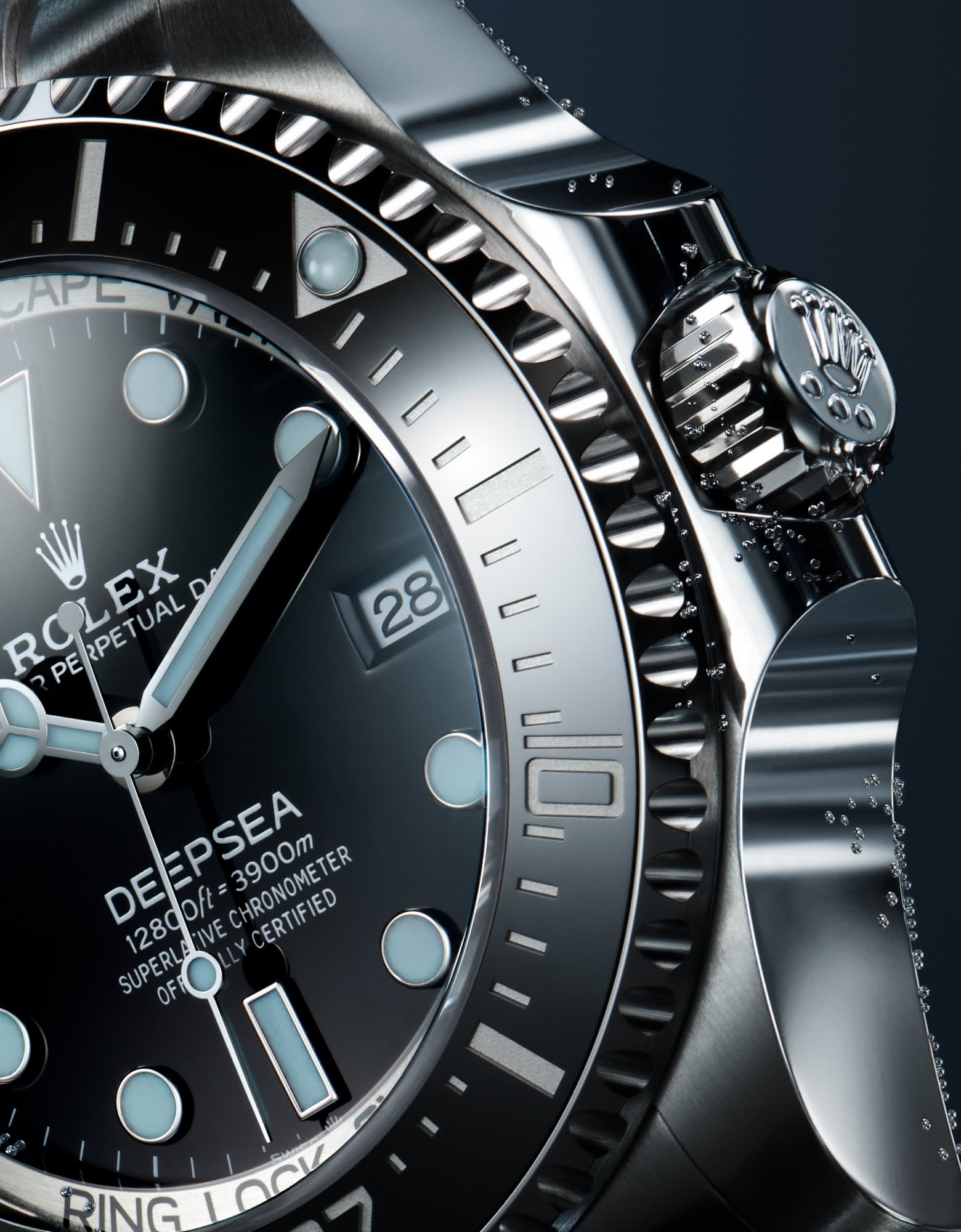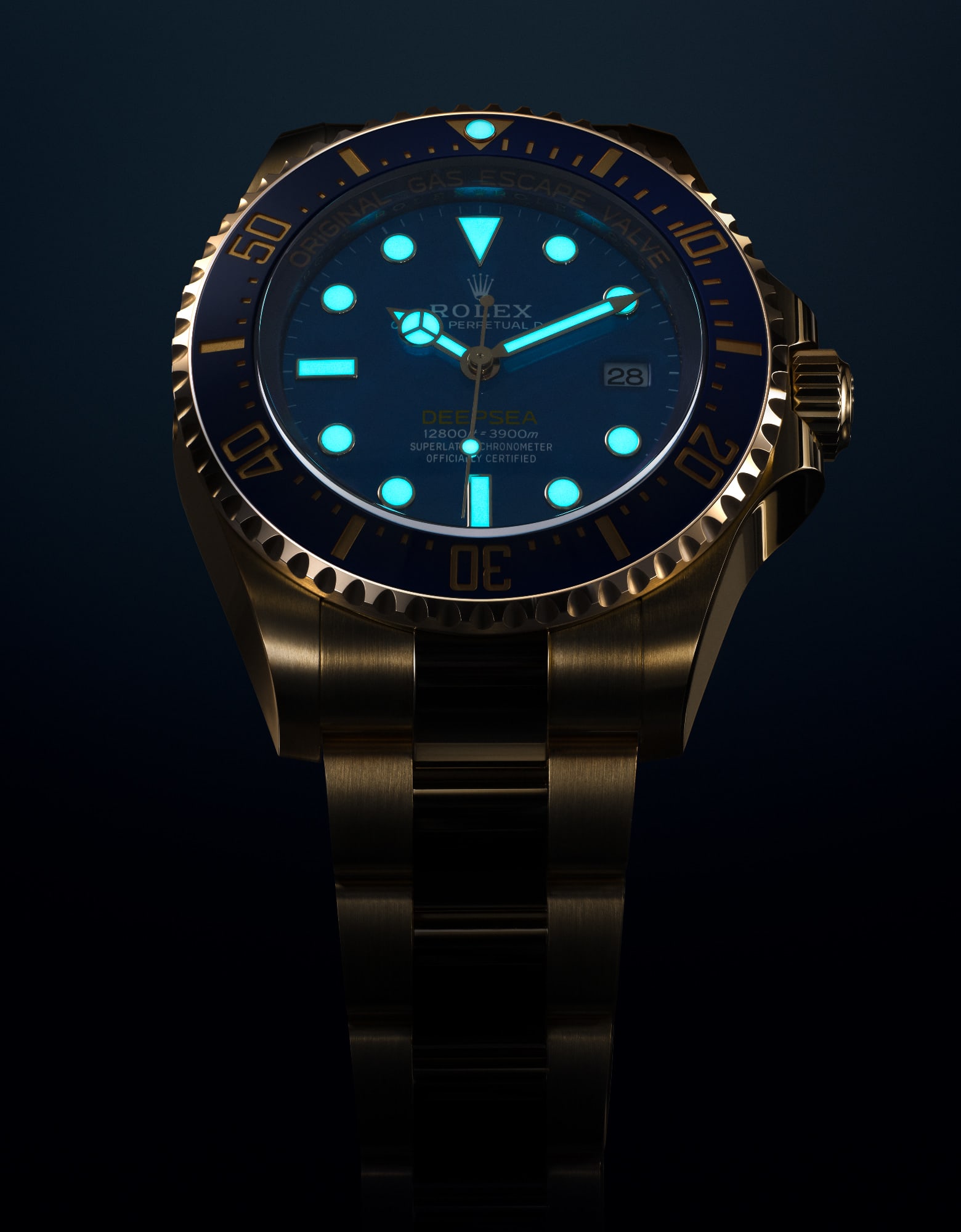
Helium escape valve
Mastering pressure
Exclusive to Rolex and patented in 1967, the helium escape valve that equips the Rolex Deepsea is an essential invention for saturation diving. It is hermetically screwed to the case and consists of a cylinder, a piston, a gasket and a spring, acting as a safety valve in case of excess internal pressure.
During descent, the hyperbaric chamber is filled with a mixture of gases, composed primarily of helium, which is vital for the diver’s survival. The helium molecules are so small that they penetrate the watch case. During the decompression process, if the helium does not escape rapidly enough, it can damage the watch, even separating the crystal from the case.
The helium escape valve is unidirectional and is automatically activated when the pressure inside the case is greater than the external pressure. It releases the helium atoms, thereby preserving the integrity of the watch during the return to the surface.









